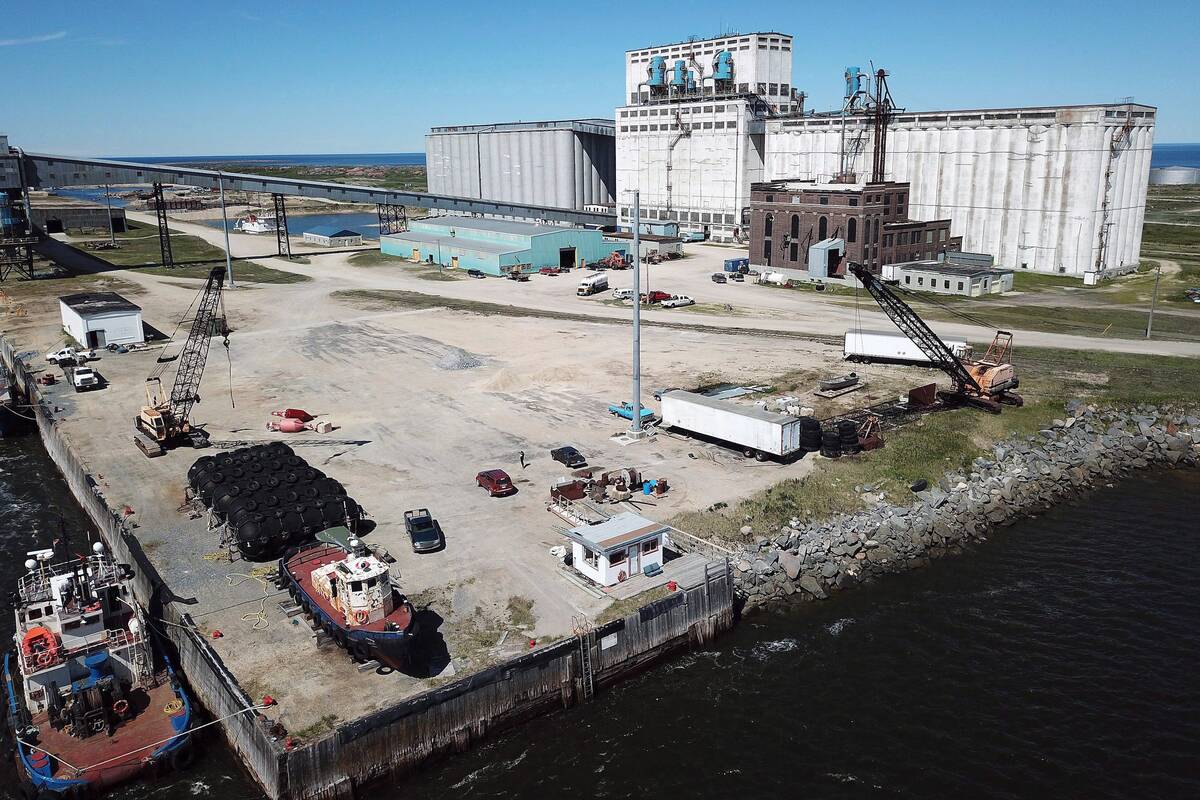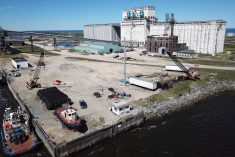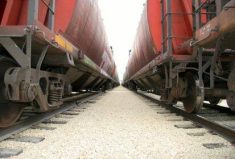Glacier FarmMedia – Another chapter in the great Canadian rail transport soap opera may be unfolding.
The tempestuous couple — railroads and grain farmers — is on the cusp of another argument over harvest shipping. And there’s no alternative for producers. They’re locked into the relationship.
Will CN Rail and CP Rail, which struggled to move a 49-million tonne harvest last year, be able to manage 75 million tonnes this fall and winter?
Read Also

Sizing up Port of Churchill expansion challenges
The Port of Churchill has some hurdles to clear before it can become the sea trade powerhouse for Manitoba and Canada that governments and the agricultural industry hope it will.
It’s a good question, said Wade Sobkowich, executive director of the Western Grain Elevator Association.
“Railways are presenting grain plans again,” he said. “The numbers they expect to move are similar to what they said they expected to move last year. But if we look at last year and how close they came to the plan, the plan was completely useless.
“The only thing worse than no information is bad information — and those grain plans represent bad information.”
[RELATED] Comment: Railways a law unto themselves
CN admits in its 2022-23 grain plan (which Ottawa requires railways to produce) that it expects intense ongoing pressure on Canada’s transportation system, especially rail movement to the West Coast.
“At this point, based on current demand forecasts and the best economic and market information available, CN expects that total demand for rail capacity between Edmonton and the ports of Vancouver and Prince Rupert will exceed network capacity during some weeks in the fall of 2022 and in early 2023,” the railway said.
That’s not because CN hasn’t been bolstering its capacity, said David Przednowek, the railway’s assistant vice-president of grain.

The railway spent $5 billion in Western Canada over the last five years, including $1.1 billion this year, to improve overall network productivity, he said.
“In the middle of COVID, CN did not take its foot off the gas when it came to investment,” said Przednowek. “We are playing the long game. Think about the growth in grain, potash, and all kinds of other rail traffic segments.”
He also said the employee count, mostly conductors and engineers, rose by 850 in the first half of this year and another 500 conductors will graduate between October and December.
In its grain plan, CP said it’s well positioned to move grain, potentially more than 25 million tonnes in this crop year. The company said it plans to increase its Canadian workforce by 1,600 people this year and is also completing a $500 million multi-year investment to purchase 5,900 new high-capacity grain cars.
“The new hopper cars are already providing significant capacity gains for Canada’s grain supply chain,” the CP document states.
‘Cause for concern’
As the railways ramp up grain deliveries to western ports, it’s too early to tell whether they’ll achieve their goals, said Mark Hemmes, president of Quorum Corporation, which tracks grain movement for the federal government.
The railways need to move about one million tonnes per week to keep up, he said.
“The next four weeks are really going to tell us how bad it’s going to be for the rest of the winter,” Hemmes said in late September. “I’m not of the mind that we should start ringing alarm bells, but there is cause for concern. The message that CN in particular sent in its annual grain plan was a little bit disconcerting.”
Sobkowich said he is very concerned, although he credits CN and CP with quickly repairing damage from washouts in B.C. in 2021. Destroyed infrastructure due to flooding blocked grain shipments, resulting in problems with sales contracts and extension penalties for grain sellers, he said. Wildfires also affected railways in 2021.
“We rolled with that the best we could, understanding that it was really a ‘nobody’s fault’ type situation,” he said. “In fact, we would say the rail companies recovered pretty quickly considering the extent of the damage.
“But once that line was up and running again — the recoverability of CN in particular, but also CP to a degree — resiliency wasn’t there.”
Post-flood grain shipping was so bad that the elevator association asked the Canadian Transportation Agency to investigate. The agency declined, which Sobkowich said is disappointing because rail transportation problems are systemic.
“The railways just didn’t have enough resources in place,” he said. “They didn’t have enough crews in order to handle the volumes that were required. They furloughed and let go quite a few of their staff.
“When it came to recoverability, they ran so lean that they just didn’t have the ability to recover as quickly as we needed them to.”
Historical problems with delivering grain to port are tarnishing Canada’s reputation as a reliable grain supplier, said Mike Ammeter, chair of the Canadian Canola Growers Association.
“We are watching a monopoly or duopoly. There’s no competition,” said Ammeter, who farms near Sylvan Lake. “So in place of competition, we have regulation. We have to rely on regulation to get that job done.”
CN and CP seem to have a “shrug of the shoulders, see you next year” attitude when it comes to transporting grain, he said.
“I’m at the mercy of the railways. I know that, they know that,” he said. “It’s just not a good spot to be in. We can have regulations forever, but at the end of the day I still don’t have an alternative.”
Slow rail shipments mean farmers sometimes lack the cashflow to properly run their businesses, said Ammeter, adding Canada could seriously damage trading relationships that have taken decades to build.
“Being nice people and being good guys, that only gets you so far,” he said. “At the end of the day there are transactions that need to take place. We need to be able to uphold our end of the bargain. When we have rail issues, it ends up being a black mark.”
Should farmers be concerned this year?
It depends on expectations, said Przednowek.
CN Rail has the capacity to move grain volumes over the course of the crop year, he said.
“We also know based on the limitations of the end-to-end supply chain, from the country elevator through the rail system to the port and for export, that there’s a limit to how much the system can handle on a weekly basis,” he said.
“If the expectation is that the crop needs to move all in the fall time and wintertime, that’s not going to happen, and I don’t think that’s the expectation.”
– This article was originally published at the Alberta Farmer Express.















